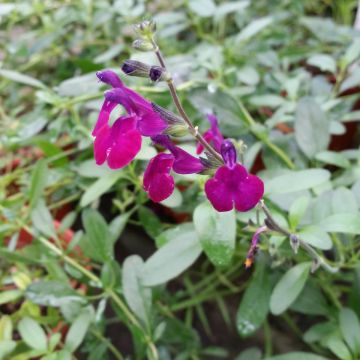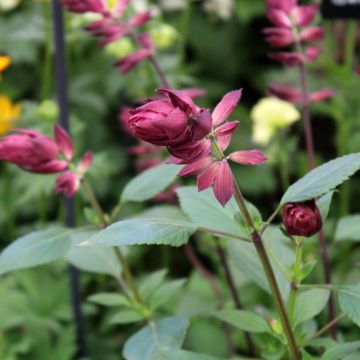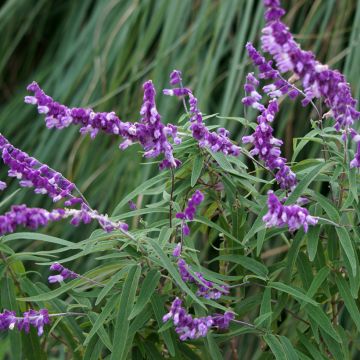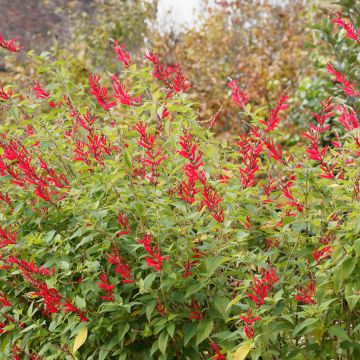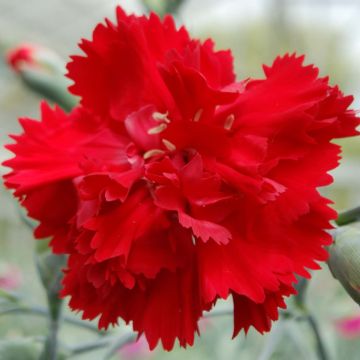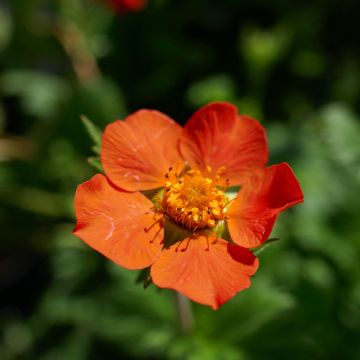

Salvia pratensis - Meadow Sage


Salvia pratensis - Meadow Sage


Salvia pratensis - Meadow Sage


Salvia pratensis - Meadow Sage


Salvia pratensis - Meadow Sage


Salvia pratensis - Meadow Sage


Salvia pratensis - Meadow Sage
Salvia pratensis - Meadow Sage
Salvia pratensis
Meadow Sage, Wild Sage, Meadow Clary
Tiny young plant, I will wait before transplanting it, otherwise the snails and slugs might make it their feast!
Lisa, 30/10/2022
This item cannot be shipped to the selected country
Delivery charge from €5.90
Delivery charge from €5.90
Delivery to Corse prohibited
More information
Schedule delivery date,
and select date in basket
This plant carries a 12 months recovery warranty
More information
We guarantee the quality of our plants for a full growing cycle, and will replace at our expense any plant that fails to recover under normal climatic and planting conditions.
From €5.90 for pickup delivery and €6.90 for home delivery
Express home delivery from €8.90.
From €5.90 for pickup delivery and €6.90 for home delivery
Express home delivery from €8.90.
Delivery to Corse prohibited: UE law prohibits the import of this plant from mainland France to Corse as part of the fight against Xylella fastidiosa. Please accept our sincere apologies.
More information

Does this plant fit my garden?
Set up your Plantfit profile →
Description
Salvia pratensis, the meadow sage, is a beautiful plant with the appearance of a charming weed that invites itself into our countryside, a regular in ditches and meadows. Extremely floriferous, this fragrant perennial plant that punctuates the landscape from spring to summer catches the eye, beautifully crowned with bright blue-violet flowers carried on airy spikes. Hardy, water-efficient, and resistant to cold, it is a plant that is very easy to grow in all regions. Give it a spot in a flower bed or along a pathway, it will bring a very natural touch!
Native to Western Europe to the Caucasus, meadow sage is a very hardy perennial herbaceous species, which tolerates sun and dry limestone soils well. Like all other sages, it belongs to the large family of Lamiaceae. Its foliage is semi-evergreen, its leafy stems form clumps that can cover 1m (3ft) in diameter under favorable conditions. It produces multi-flowered spike-like inflorescences from June to August (less time in hot climates) which are up to 75cm (30in) in height. The elongated bilabiate flowers are light blue-mauve in colour, enclosed at the base in a violet calyx. They are rich in nectar, and continue to bloom until mid-summer, and are highly prized by butterflies and bees. The leaves, deciduous, are ovate to oblong, rough, with crenate margins, forming beautiful foliage. They are somewhat dull dark green, hairy, and contain a fragrant essential oil, noticeable when crushed. The medicinal properties of this species are similar to those of the common sage Salvia officinalis. Meadow sage has given rise to numerous cultivars with white, pink, blue, or purple flowers.
Meadow sage is vigorous enough to withstand weed competition. It excels on slopes as it helps to stabilize them with its deeply anchored roots, allowing it to draw moisture even during heatwaves. It is perfect for maintaining the soil in rockeries or banks near water. It is a very resilient plant, tolerating prolonged periods of drought and arid growing conditions. It tolerates limestone well, even growing on chalky slopes, and endures harsh winters without weakening. In flower beds, for example, associate it with linaria, which is related to sage, red pentstemons, or orange shrubby potentillas and shrubby lavateras. Mix it with old-fashioned roses and Nepeta faassenii, Lychnis coronaria, and light grasses... It goes well with all garden plants!
With over 900 species of annuals, perennials, and shrubs distributed throughout our planet, except for very cold regions and tropical forests, the Salvia genus is the largest in the Lamiaceae family. The name Salvia, which dates back to Roman times, derives from the Latin salvus meaning 'healthy' in reference to the medicinal properties of officinal sage.
Report an error about the product description
Salvia pratensis - Meadow Sage in pictures
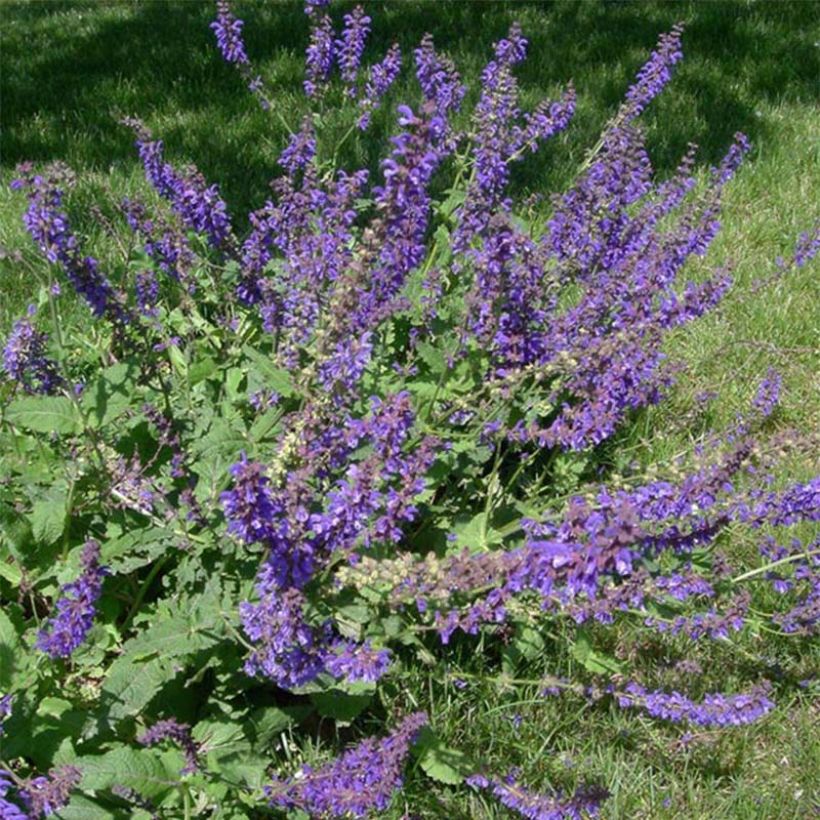

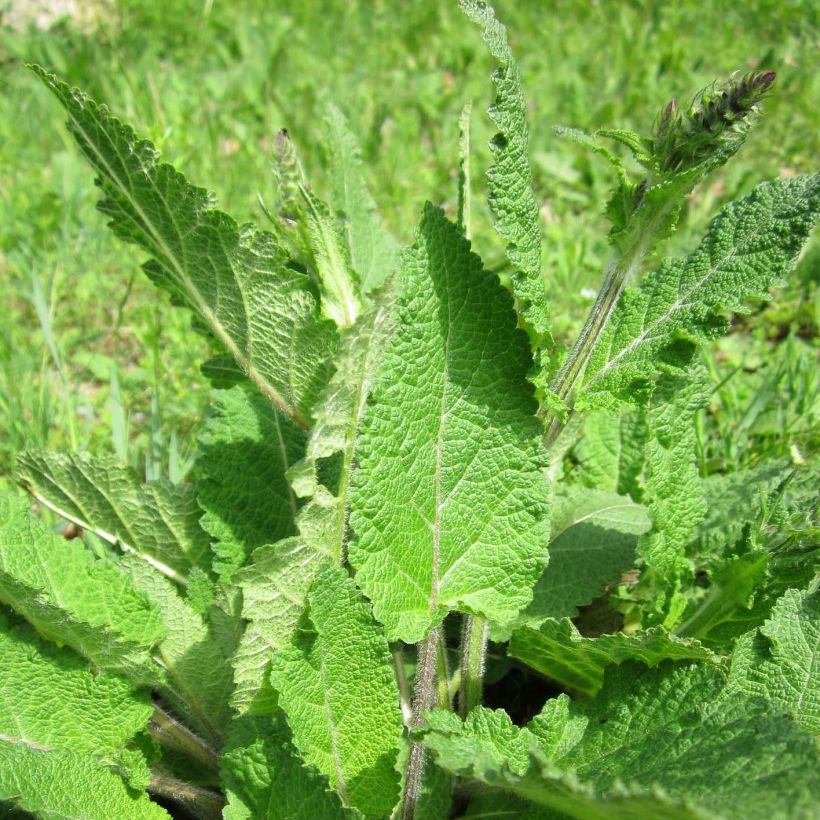



Flowering
Foliage
Plant habit
Botanical data
Salvia
pratensis
Lamiaceae
Meadow Sage, Wild Sage, Meadow Clary
Caucasus
Other Salvia - Sage
Planting and care
Plant meadow sage in ordinary, even poor and rather chalky soil, which is above all well-drained. This plant tolerates some drought once well established. It does not appreciate heavy, waterlogged soils in winter that can harm its hardiness. Plant it in a sunny or semi-shaded position. It is an easy plant, and very floriferous. In spring, you can give it fertiliser and in April, cut back all branches by half. After flowering, cut back the faded flower stalks to stimulate and prolong flowering. To preserve the vitality of the sage, it is good to divide the plant after 3 years. Plant the new plants in well-prepared soil: to improve slightly poor soil, mix in some horticultural compost.
Planting period
Intended location
Care
-
, onOrder confirmed
Reply from on Promesse de fleurs
Summer flowering perennials
Haven't found what you were looking for?
Hardiness is the lowest winter temperature a plant can endure without suffering serious damage or even dying. However, hardiness is affected by location (a sheltered area, such as a patio), protection (winter cover) and soil type (hardiness is improved by well-drained soil).

Photo Sharing Terms & Conditions
In order to encourage gardeners to interact and share their experiences, Promesse de fleurs offers various media enabling content to be uploaded onto its Site - in particular via the ‘Photo sharing’ module.
The User agrees to refrain from:
- Posting any content that is illegal, prejudicial, insulting, racist, inciteful to hatred, revisionist, contrary to public decency, that infringes on privacy or on the privacy rights of third parties, in particular the publicity rights of persons and goods, intellectual property rights, or the right to privacy.
- Submitting content on behalf of a third party;
- Impersonate the identity of a third party and/or publish any personal information about a third party;
In general, the User undertakes to refrain from any unethical behaviour.
All Content (in particular text, comments, files, images, photos, videos, creative works, etc.), which may be subject to property or intellectual property rights, image or other private rights, shall remain the property of the User, subject to the limited rights granted by the terms of the licence granted by Promesse de fleurs as stated below. Users are at liberty to publish or not to publish such Content on the Site, notably via the ‘Photo Sharing’ facility, and accept that this Content shall be made public and freely accessible, notably on the Internet.
Users further acknowledge, undertake to have ,and guarantee that they hold all necessary rights and permissions to publish such material on the Site, in particular with regard to the legislation in force pertaining to any privacy, property, intellectual property, image, or contractual rights, or rights of any other nature. By publishing such Content on the Site, Users acknowledge accepting full liability as publishers of the Content within the meaning of the law, and grant Promesse de fleurs, free of charge, an inclusive, worldwide licence for the said Content for the entire duration of its publication, including all reproduction, representation, up/downloading, displaying, performing, transmission, and storage rights.
Users also grant permission for their name to be linked to the Content and accept that this link may not always be made available.
By engaging in posting material, Users consent to their Content becoming automatically accessible on the Internet, in particular on other sites and/or blogs and/or web pages of the Promesse de fleurs site, including in particular social pages and the Promesse de fleurs catalogue.
Users may secure the removal of entrusted content free of charge by issuing a simple request via our contact form.
The flowering period indicated on our website applies to countries and regions located in USDA zone 8 (France, the United Kingdom, Ireland, the Netherlands, etc.)
It will vary according to where you live:
- In zones 9 to 10 (Italy, Spain, Greece, etc.), flowering will occur about 2 to 4 weeks earlier.
- In zones 6 to 7 (Germany, Poland, Slovenia, and lower mountainous regions), flowering will be delayed by 2 to 3 weeks.
- In zone 5 (Central Europe, Scandinavia), blooming will be delayed by 3 to 5 weeks.
In temperate climates, pruning of spring-flowering shrubs (forsythia, spireas, etc.) should be done just after flowering.
Pruning of summer-flowering shrubs (Indian Lilac, Perovskia, etc.) can be done in winter or spring.
In cold regions as well as with frost-sensitive plants, avoid pruning too early when severe frosts may still occur.
The planting period indicated on our website applies to countries and regions located in USDA zone 8 (France, United Kingdom, Ireland, Netherlands).
It will vary according to where you live:
- In Mediterranean zones (Marseille, Madrid, Milan, etc.), autumn and winter are the best planting periods.
- In continental zones (Strasbourg, Munich, Vienna, etc.), delay planting by 2 to 3 weeks in spring and bring it forward by 2 to 4 weeks in autumn.
- In mountainous regions (the Alps, Pyrenees, Carpathians, etc.), it is best to plant in late spring (May-June) or late summer (August-September).
The harvesting period indicated on our website applies to countries and regions in USDA zone 8 (France, England, Ireland, the Netherlands).
In colder areas (Scandinavia, Poland, Austria...) fruit and vegetable harvests are likely to be delayed by 3-4 weeks.
In warmer areas (Italy, Spain, Greece, etc.), harvesting will probably take place earlier, depending on weather conditions.
The sowing periods indicated on our website apply to countries and regions within USDA Zone 8 (France, UK, Ireland, Netherlands).
In colder areas (Scandinavia, Poland, Austria...), delay any outdoor sowing by 3-4 weeks, or sow under glass.
In warmer climes (Italy, Spain, Greece, etc.), bring outdoor sowing forward by a few weeks.

































